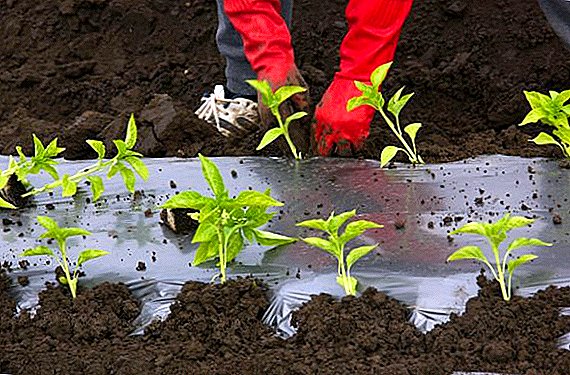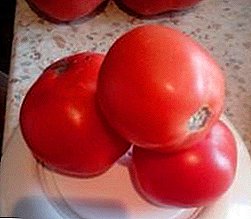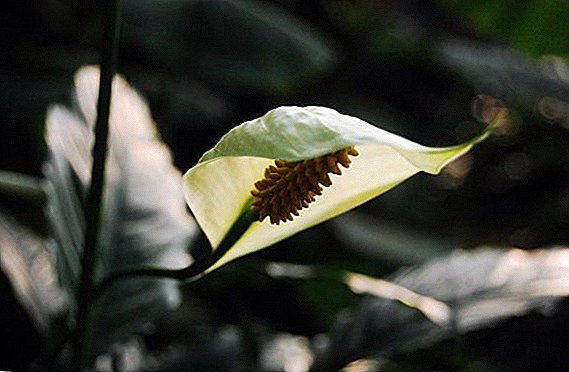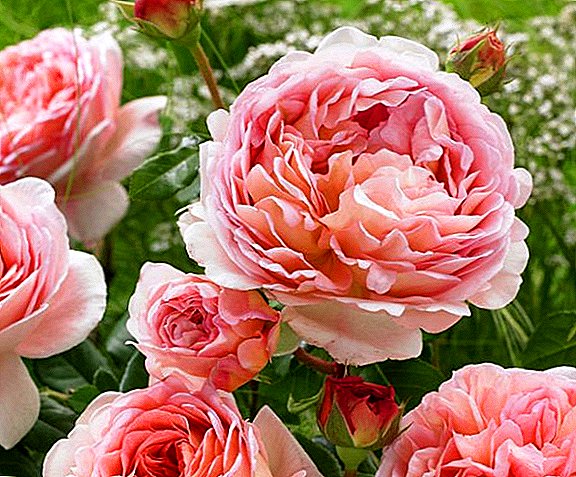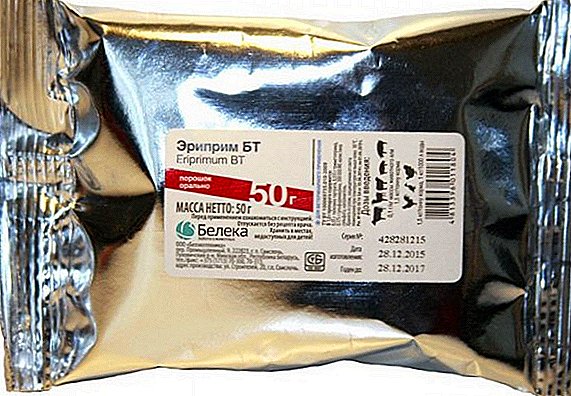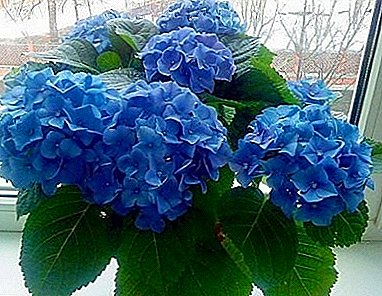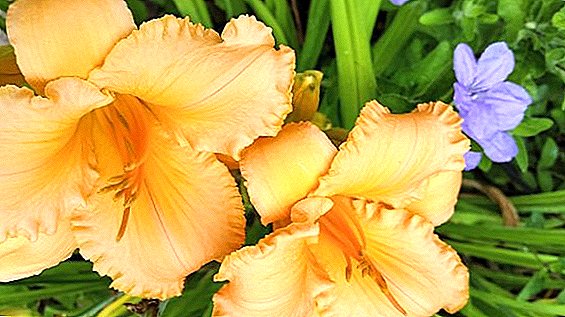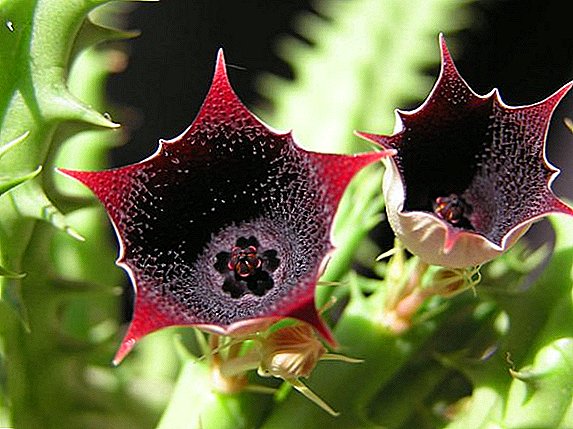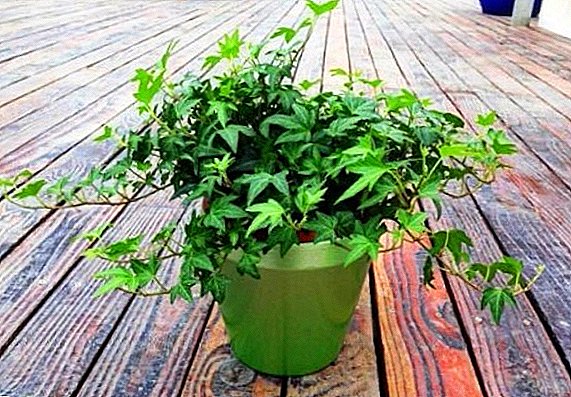 Indoor ivy is one of the most beloved plants of gardeners. The homeland of ordinary ivy (lat. Hedera helix - ivy curly) is the Mediterranean. Today, thanks to the work of breeders, there are more than a hundred varieties of indoor ivy ("Holibra", "Eve", "Mona Lisa", "Harald", "Jubilee", etc.).
Indoor ivy is one of the most beloved plants of gardeners. The homeland of ordinary ivy (lat. Hedera helix - ivy curly) is the Mediterranean. Today, thanks to the work of breeders, there are more than a hundred varieties of indoor ivy ("Holibra", "Eve", "Mona Lisa", "Harald", "Jubilee", etc.).
Did you know? Ivy, evergreen vine, unable to withstand its own weight and needs support. Therefore, it clings to adventitious roots to any roughness on the surface and twists around the branches of trees (no wonder the popular name for ivy is the loach).
Necessary conditions for growing indoor ivy
Ivy ordinary attracted attention due to these qualities:
- decorative;
- resistance to temperature and draft;
- unpretentiousness (not exacting to watering, shade-loving);
- the ability to grow rapidly.
Location and lighting
 How to care for indoor ivy? First you need to decide where your plant will live. When choosing a place you should take into account that indoor ivy is a shade-loving plant. Bright light with direct rays is contraindicated. The best option is to find a place sufficiently illuminated by diffused sunlight (you can even in the back of the room). If you have a variegated representative of the kind of ivy, the light will need more (otherwise the beauty of the leaves will disappear - they will turn green).
How to care for indoor ivy? First you need to decide where your plant will live. When choosing a place you should take into account that indoor ivy is a shade-loving plant. Bright light with direct rays is contraindicated. The best option is to find a place sufficiently illuminated by diffused sunlight (you can even in the back of the room). If you have a variegated representative of the kind of ivy, the light will need more (otherwise the beauty of the leaves will disappear - they will turn green).
If you want to grow ivy as an ampelous plant - then it is better to choose a place near the wall (so that there is room for young shoots to grow).
Did you know? Ivy is sensitive to location changes, so it’s best to choose a permanent place for it, so as not to change it.
Air temperature and humidity
Content of indoor ivy in summer:
- comfortable temperature from + 22 to + 25 degrees;
- heat and dry air are contraindicated. Young plants in hot weather, it is desirable to make in the cool (in the shade on the balcony); preferably - daily spraying, douche with leaves (to refresh and wash off the dust).
 Ivy content in winter:
Ivy content in winter:- allowed to stay plants in a cool room with a temperature of + 12-13 degrees;
- it is not necessary to place the flower near the heating devices (otherwise it is necessary to increase the humidity - more often water, spray);
- in a heated room, it is better to place a pot with ivy on a tray with expanded clay and water.
Soil: watering and dressing
Ivy prefers slightly acidic soil (pH - 5.5 - 6.5). In terms of composition, the best 1: 1 ratio of the following elements:
- leafy ground;
- turfy land;
- humus earth;
- peat;
- sand.
 Periodic feeding (in spring and summer - 2 times a month, in winter - once) will ensure growth and green ivy. For top dressing it is better to use complex fertilizers for leafy indoor plants.
Periodic feeding (in spring and summer - 2 times a month, in winter - once) will ensure growth and green ivy. For top dressing it is better to use complex fertilizers for leafy indoor plants.
Important! Oversupply leads to yellowing of ivy and loss of leaves.
Pruning
 At some point, the owner will have a question about how to cut room ivy. There is nothing complicated here - you will occasionally need to cut ivy. This is best done during periods of active plant growth. Pruning needed:
At some point, the owner will have a question about how to cut room ivy. There is nothing complicated here - you will occasionally need to cut ivy. This is best done during periods of active plant growth. Pruning needed:
- to create a lush crown and remove bared shoots. At the same time you need to leave one or two buds. Later several new shoots will grow from them;
- for complete removal of diseased or weak shoots.
How to transplant indoor ivy
When do ivy transplant at home?
The first transplant will be required, most likely, after the purchase of heders - it is often sold in the transport substrate. You need to wait from 7 to 10 days (the plant must adapt to new conditions). The substrate must be completely removed without damaging the roots. It is necessary to replant in a wide tank with expanded clay drainage.
 Young plants recommend replanting annually, at the age of three years - once every two years, over five years old - they are not transplanted, but they change the top layer of the old soil with a new one.
Young plants recommend replanting annually, at the age of three years - once every two years, over five years old - they are not transplanted, but they change the top layer of the old soil with a new one.
Important! The signal about the need to transplant heders - roots, sprouted from drainage holes, withering leaves, cessation of growth.
It is best to replant in early autumn or spring. The method of "transshipment" is used: after watering, an old clod of earth together with a plant is planted in a tank with drainage (2 cm larger in diameter than the old one), the slots are filled with fresh earth. Watered and sprayed.
Ivy propagation
Reproduction of indoor ivy at home is possible by three main methods: cuttings, shoots and layering. 
Stem cuttings
Apical stem cuttings (up to 10 cm long) with air roots are used as the starting material. The procedure is simple:
- Cut cuttings;
- To plant in a pot with a nutrient mixture (sand and leaf ground). Can be planted in one pot of three cuttings;
- Pour and cover with a transparent film;
- Periodically moisturize so as not to dry out;
- After rooting, transplant in a separate pot.
Alternatively, the cuttings can be germinated in a jar of water (after removing the lower leaves on the process).
The method of propagation of ivy cuttings used growers most often.
Shoots
Using this method, it is possible to obtain several rooted processes simultaneously from a single stalk:
- Cut off the shoot with ten leaves;
- deepen in the sand by 1.5 - 2 cm (the leaves should remain on the surface). Sometimes cuts are made along the entire length of the stem - this will speed up rooting;
- Water and constantly moisturize until the formation of roots 2 - 3 weeks (a signal is the appearance of new leaves);
- Remove the stem from the sand and cut it into pieces (each part should have a leaf and roots);
- plant in pots.
Layering
 The third method is used, as a rule, when ivy is kept on the street or unwillingness of the grower to take a process from ivy. If capacity allows, it can be used at home. To do this, the ripened lash-shoot needs to be bent down to the ground, a longitudinal section is made along the stem, prikopat ground and secure, so as not to straighten. After rooting, cut off from the mother bush and transplant.
The third method is used, as a rule, when ivy is kept on the street or unwillingness of the grower to take a process from ivy. If capacity allows, it can be used at home. To do this, the ripened lash-shoot needs to be bent down to the ground, a longitudinal section is made along the stem, prikopat ground and secure, so as not to straighten. After rooting, cut off from the mother bush and transplant.
Problems and diseases
Room ivy has a high immunity. Possible causes of the death of ivy - complete disregard for all rules of cultivation. Therefore, a fatal outcome (if you do not set yourself such a goal) is unrealistic.
Most often ivy lovers face problems:
- variegated ivy varieties begin to lose decorative, gradually fade. The reason is a lack of light. Treatment - to rearrange the flower in a brighter place;
 new ivy leaves are becoming smaller and are beginning to actively crumbling. The reason why ivy leaves dry is low air humidity. Treatment - often spray, balance watering, feed;
new ivy leaves are becoming smaller and are beginning to actively crumbling. The reason why ivy leaves dry is low air humidity. Treatment - often spray, balance watering, feed;- massively begin to turn yellow leaves. The reason - an excess of moisture or fertilizing.
- scytivka - deprives the food leaves;
- Aphid (especially winged) - feeds on sap, infects young shoots and leaves;
- mealybug - infects the leaves, pollutes the fungus, inhibits the growth of ivy;
- red spider mite - strikes the stem.
Important! When buying ivy, you need to carefully examine the plant (the stems and especially the lower part of the leaves - there may be pests, and you can bring them into the house).
The healing and beneficial properties of indoor ivy
Room ivy, in addition to high aesthetic qualities, possesses a number of useful properties:
 cleans the air from harmful impurities in the room, saturates with oxygen, kills fecal bacteria (true if there is a pet in the house);
cleans the air from harmful impurities in the room, saturates with oxygen, kills fecal bacteria (true if there is a pet in the house);- It has medicinal properties (high content of vitamin E, provitamin A, carotene, hederin, tannin and oleic acids in the leaves), is a part of many drugs (antispasmodic, anti-inflammatory, expectorant).
This plant is a whole pharmacy in the room.
The people have long noticed and used the healing properties of the loach:
- for cough (infusions and decoctions of dry leaves);
- from corns (gruel from fresh leaves);
- from rheumatism, arthritis, with the deposition of salts - infusion of leaves;
- from boils, scabies, burns - infusions from the roots.
Did you know? The leaves of indoor ivy collected in August-September. The leaves are dried in a dryer (at + 50 ... + 60 ° C) or under a canopy in air. Store dried leaves can be up to 4 years.
Myths and reality about ivy
 Ivy is surrounded by a variety of myths. People often call him a flower-muzhegon, a love boy, they say that this plant is an “energy vampire”, “survives” other plants, etc.
Ivy is surrounded by a variety of myths. People often call him a flower-muzhegon, a love boy, they say that this plant is an “energy vampire”, “survives” other plants, etc.
There is no scientific evidence of these speculation. On the contrary, in the Mediterranean tradition ivy is placed in the bedrooms of spouses - it is believed that the header connects family members with each other and ties them to their home. In the east, ivy is considered as a source of vital energy and, accordingly, to plant ivy - to get it. Garden ivy room growers often planted in pots to other plants.
If you like ivy - start it boldly: it is unpretentious, useful and beautiful plant.
Important! If you have cats in your home that love to nibble on leaves, remember that indoor ivy leaves are poisonous and can cause poisoning in cats.


 new ivy leaves are becoming smaller and are beginning to actively crumbling. The reason why ivy leaves dry is low air humidity. Treatment - often spray, balance watering, feed;
new ivy leaves are becoming smaller and are beginning to actively crumbling. The reason why ivy leaves dry is low air humidity. Treatment - often spray, balance watering, feed; cleans the air from harmful impurities in the room, saturates with oxygen, kills fecal bacteria (true if there is a pet in the house);
cleans the air from harmful impurities in the room, saturates with oxygen, kills fecal bacteria (true if there is a pet in the house);
